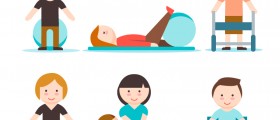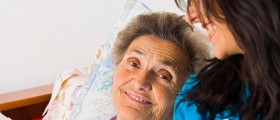
Rehabilitation is a process of recovery, manifesting through various treatments which are supposed to help an individual who has endured illnesses, injuries or other health problems. Through proper rehabilitation, this person should be able to recover completely or to a certain extent.
The Goals of Rehabilitation
People who undergo rehabilitation may be doing so for many different reasons. Firstly, they may have survived an illness or a disease which took its toll on their body. Also, they may have amputated limbs, arthritis, cancer, neurological issues, orthopedic injuries, brain injuries, strokes or spinal cord injuries. Usually, rehabilitation comes after medication or surgical treatments. Taking into consideration that 14% of Americans may become disabled in any given point of time, rehabilitation is certainly an important aspect of medical treatment.
Nevertheless, rehabilitation should only be carried out by qualified therapists who are well aware of their patients' conditions and needs.
Rehabilitation Per Se
Once it comes to factors rehabilitation therapy takes into consideration, we can say that any physical, psychological or environmental needs of the patient are the primary concern. The physicians involved in this healing process are physical experts, occupational and speech therapists as well as many other qualified individuals, including nurses and engineers, along with psychiatrists, psychologists, orthoists, prosthetists and vocational counselors. In some cases, even the family of the patient may be involved in the rehabilitation process.
The Therapy
Rehabilitation therapy may include numerous types of massages, chosen for a specific healing and revitalizing purpose. Those who have suffered from bone, muscle and nervous system damage are bound to benefit from cold or hot massage, whirlpool baths, exercising, ultrasound and other, similar techniques. Physical therapy is a crucial part of rehabilitation, especially for those who have lost a limb, or have suffered from an injury or illness.
As far as physical therapy is concerned, exercising is the main aspect of this set of activities. The patient may perform the exercises him/herself or with the assistance of the therapist. Also, if needed, numerous devices like wheelchairs, practice stairs or others may help in the process.
Along with the previously mentioned rehabilitation methods, there are cases where the patients are subjected to minimal electric current exposure in order to get their muscles activated in cases of weakness or paralysis.
Finally, occupational therapy may help all people who fit the above described patient profile. Depending on the damage the patient endured, the occupational therapist is supposed to teach him/her how to live with the imminent lifestyle changes which took place. This may involve teaching the patient to walk with a cane or use a wheelchair or an artificial limb correctly, managing to live without problems once he/she gets back home.

















Your thoughts on this
Loading...